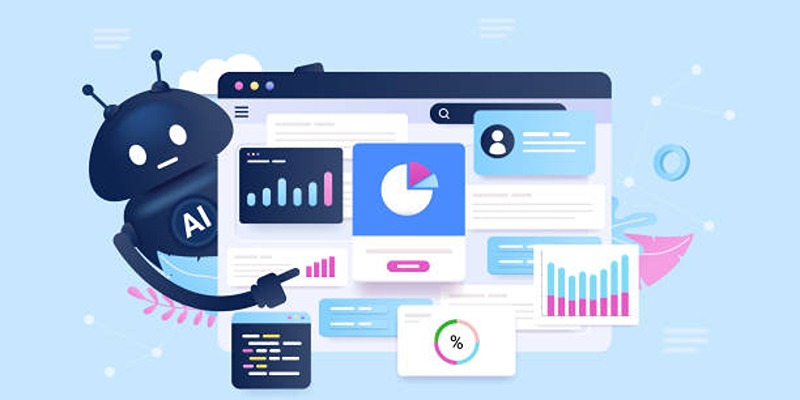Transparency in artificial intelligence plays a pivotal role in enhancing bot security by fostering trust and accountability. Openly sharing system processes, decision-making algorithms, and data-handling practices helps identify vulnerabilities and ensures ethical compliance. By promoting transparency, organizations can build robust security measures, mitigate risks, and create safer interactions between bots and users in an evolving technological landscape.
Understanding AI-Powered Bot Security:
Programs known as bots serve various purposes in customer service, data analysis, and cybersecurity operations. These bots gain improved capabilities through AI because it allows them to collect information from data sources while becoming better at threat detection and working faster. The lack of transparency makes AI-driven bots susceptible to being used in harmful ways or developing biased behaviors as well as to negligent operation.
The term transparency in AI means the capability to understand, along with explaining how AI models perform their decision-making tasks. Bot security management becomes stronger when developers and users, alongside regulatory bodies, are able to track examine and validate all bot system operations during their lifecycle.
What is Transparency in AI?

The ability of people to comprehend AI-driven system operations, choices linked to their decision-making and reasoning process, defines transparency in AI. A transparent AI system openly communicates:
- How it works
- What drives its decision-making process
- What data does it rely on
- What limitations does it face
For bot security, transparency isn't just about ethical design—it directly enhances the system's ability to resist exploitation and manipulation.
Why Transparency is Critical for Bot Security?
1. Preventing Malicious Exploitation
Opaque AI models can be manipulated by attackers who exploit hidden vulnerabilities. Transparent AI allows security teams to identify weaknesses, detect anomalies, and apply necessary patches before attackers can take advantage.
2. Enhancing Accountability
When AI-driven bots make errors or exhibit biased behavior, transparency helps trace the root cause. This accountability ensures that organizations can rectify issues promptly and maintain user trust.
3. Facilitating Compliance with Regulations
Many industries require adherence to strict security and privacy standards. Transparent AI ensures that bots comply with regulations such as GDPR, which mandates explainability in automated decision-making processes.
4. Improving User Trust
Users are more likely to engage with bots if they understand how their data is processed. Transparent AI fosters confidence by providing clear explanations of bot functionalities and security measures.
Components of a Transparent AI Framework for Bot Security:
To integrate transparency effectively, organizations must focus on several components that collectively fortify bot security:
1. Explainability
Explainable AI ensures that every decision made by a bot can be traced and understood. If a chatbot suddenly redirects users or denies access to a service, there should be a clear, logical reason logged and presented. This prevents both user confusion and exploitation by attackers who target inconsistencies.
2. Audit Trails and Logging
Detailed logs and trails allow for forensic investigation in the event of a breach. Transparent logging must include:
- User interactions
- System decisions
- Flagged anomalies
Proper logging not only boosts security but also helps in the continuous improvement of the AI system.
3. Human-in-the-Loop Systems
In sensitive operations, AI systems should be monitored or overridden by human moderators. This hybrid model ensures that when bots face complex or potentially harmful scenarios, a human can intervene.
This safeguards:
- Decision integrity
- Ethical responsibility
- Prevention of cascading AI errors
Challenges in Implementing Transparent AI for Bot Security:
While transparency is essential, achieving it in AI-driven bots presents several challenges:
1. Complexity of AI Models
Advanced AI systems, such as deep learning models, operate as "black boxes," making it difficult to interpret their decision-making processes. Simplifying these models without compromising performance is a significant hurdle.
2. Balancing Transparency and Security
Revealing too much about an AI model’s inner workings can expose it to reverse engineering by malicious actors. Striking the right balance between transparency and security is crucial.
3. High Computational Costs
Implementing explainability features often requires additional computational resources, which can slow down bot performance and increase operational costs.
4. Lack of Standardized Frameworks
The absence of universally accepted transparency standards makes it challenging for organizations to adopt consistent practices across different AI-driven bot applications.
Best Practices for Ensuring Transparency in AI-Driven Bot Security:
To overcome these challenges, organizations should adopt the following best practices:
1. Use Explainable AI (XAI) Techniques
Explainable AI methods, such as decision trees, rule-based systems, and model-agnostic approaches like LIME and SHAP, help interpret complex AI models. These techniques allow security teams to understand bot behavior and identify potential vulnerabilities.
2. Implement Robust Auditing Mechanisms
Regular audits of AI models ensure that bots operate as intended. Automated logging and real-time monitoring tools can track bot decisions, flag anomalies, and provide insights into security risks.
3. Adopt Open-Source and Standardized Models
Using open-source AI frameworks promotes transparency by allowing peer reviews and community-driven improvements. Standardized models also help maintain consistency in security practices.
4. Provide Clear Documentation
Comprehensive documentation detailing how AI-driven bots function, including data sources, training methods, and decision logic, enhances transparency for stakeholders and regulators.
5. Encourage Ethical AI Development
Organizations should prioritize ethical AI principles, ensuring that bots are designed with fairness, accountability, and security in mind. Ethical guidelines help prevent misuse and build public trust.
Future Trends in Transparent AI for Bot Security:

As AI continues to advance, several emerging trends will shape the future of transparent bot security:
1. Federated Learning for Privacy-Preserving AI
Federated learning allows AI models to train on decentralized data without exposing sensitive information. This approach enhances transparency while maintaining data privacy.
2. AI-Powered Threat Detection
Next-generation AI bots will leverage transparency to detect and neutralize cyber threats in real time, providing self-healing security mechanisms.
3. Regulatory Advancements
Governments and regulatory bodies are expected to introduce stricter transparency requirements for AI systems, pushing organizations to adopt more accountable bot security practices.
4. Human-AI Collaboration
Transparent AI will enable better collaboration between human security experts and bots, allowing for more effective threat analysis and response strategies.
Conclusion:
Transparency in AI is a cornerstone of robust bot security, ensuring accountability, compliance, and user trust. While challenges such as model complexity and balancing security with openness exist, adopting explainable AI techniques, auditing mechanisms, and ethical guidelines can mitigate risks. As AI technology evolves, transparent practices will play an increasingly vital role in safeguarding automated systems against emerging threats.











